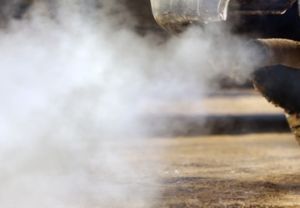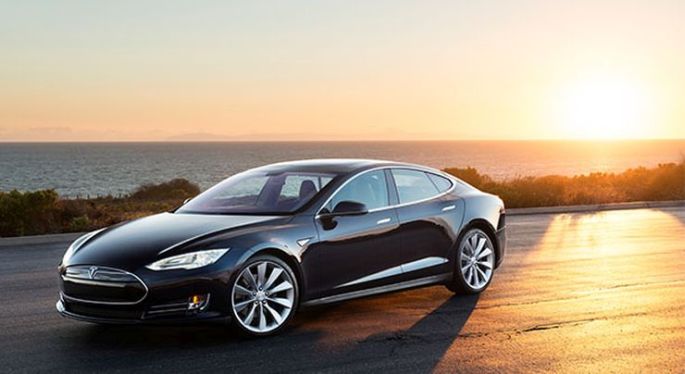 If you're wondering whether setting your automotive battery on concrete will cause it to discharge, wonder no longer. Today, the type of plastic (polypropylene) used in battery cases is a great electrical insulator. Also, tremendous technological improvements have been made in the seals around the battery posts and vent systems, which have virtually eliminated electrolyte seepage and migration. So, it's OK to set or store your battery on concrete. A battery's rate of discharge is only affected by its age, the temperature outside and the way the inside of the battery is made.
If you're wondering whether setting your automotive battery on concrete will cause it to discharge, wonder no longer. Today, the type of plastic (polypropylene) used in battery cases is a great electrical insulator. Also, tremendous technological improvements have been made in the seals around the battery posts and vent systems, which have virtually eliminated electrolyte seepage and migration. So, it's OK to set or store your battery on concrete. A battery's rate of discharge is only affected by its age, the temperature outside and the way the inside of the battery is made.
 The best time to learn about jump starting a battery is before you become stranded and need to know. These instructions should help you become familiar with the process. Once you've read through these instructions, print them and purchase a set of jumper cables. Then, keep these instructions and your jumper cables together somewhere in your vehicle or trunk, in the event you should ever need them.
The best time to learn about jump starting a battery is before you become stranded and need to know. These instructions should help you become familiar with the process. Once you've read through these instructions, print them and purchase a set of jumper cables. Then, keep these instructions and your jumper cables together somewhere in your vehicle or trunk, in the event you should ever need them.
CARSON, Calif., April 29, 2015 /PRNewswire/ -- This month is National Distracted Driving Awareness month and, with more than 80% of people owning a smartphone1, the issue of in-car distraction is an increasing concern, so the experts at AutoMD.com are offering Top Ten Tips to help drivers keep their eyes on the road – and away from distractions.
According to the National Highway Traffic Safety Administration (NHTSA), 10 percent of fatal crashes, 18 percent of injury crashes, and 16 percent of all motor vehicle traffic crashes in 2013 were reported as distraction-affected crashes.2 The FCC has also reported that 11 percent of drivers aged 18 to 20 involved in an automobile accident (and survived) admitted they were sending or receiving texts at the time of the crash.3 It's statistics like these that make this month's Distracted Driving Awareness campaign by NHTSA so critical, and why AutoMD experts are chiming in to get the word out about distracted driving.

ORLANDO, Fla. (April 28, 2015) – Due to declines in gas prices and finance charges, the annual cost to own and operate a vehicle has fallen to $8,698, a nearly 2 percent drop from last year, according to AAA’s 2015 Your Driving Costs study. This research examines the cost of fuel, maintenance, tires, insurance, license and registration fees, taxes, depreciation and finance charges associated with driving a typical sedan 15,000 miles annually. In the United States, a driver can expect to spend 58 cents for each mile driven, nearly $725 per month, to cover the fixed and variable costs associated with owning and operating a car in 2015.
Lauren Fix, The Car Coach joins CCTV to discuss how China-based brands in the automotive industry are faring in foreign markets, as well as how other foreign automakers are hoping to enter into coveted the US and Chinese markets.
Back roads. Byways. Scenic highways. Arizona is chock full of them.
Here are five of our favorites.
Route 66: small-town America, with a side of kitsch
'Get your kitsch on Route 66' might be a better slogan for Arizona’s scrubby stretch of Mother Road. Lumbering dinosaurs. A wigwam motel. A prank-filled ice-cream shop. You’d think these people didn’t realize Interstate 40 passed them by a few decades ago.
Western Arizona is home to one of the longest stretches of pure, unadulterated Route 66 – 173 free-range miles that never join the interstate. From Topock, on Arizona’s western border, Route 66 rolls north to Oatman, passing through the town’s craggy hills, begging burros and hokey Old West charms. Then it’s a twisting drive past tumbleweeds and saguaros on the way to the Black Mountains and a final push to Kingman.
 When I worked for the City of New York, I often asked people what they felt was the worst environmental problem. Many said tailpipe pollution. Emissions from the tailpipes of cars and trucks seemed particularly insulting because—as we all walked our kids to school—the tailpipes seemed to be spewing black smoke just at the level of our kids’ heads.
When I worked for the City of New York, I often asked people what they felt was the worst environmental problem. Many said tailpipe pollution. Emissions from the tailpipes of cars and trucks seemed particularly insulting because—as we all walked our kids to school—the tailpipes seemed to be spewing black smoke just at the level of our kids’ heads.
Our cars and trucks have become a lot cleaner since then, but exhaust from vehicle tailpipes is still a major source of air pollution, responsible for up to 45 percent of soot and smog-forming pollution in many areas of the country. Air pollution still sends thousands of kids and adults to the emergency room every year with asthma attacks or breathing difficulty, and keeps hundreds of thousands more home from school or work; it can even shorten the lives of people with heart or lung trouble. The latest set of tailpipe and clean gasoline standards announced today by the U.S. Environmental Protection Agency (EPA) will help reduce smog and soot and clear the air for millions of Americans, saving thousands of lives and up to $19 billion in health costs each year.
Finally, spring. Daffodils! Budding trees! Short sleeves! Rising gas prices!
Wait, what was that last one?
In case you hadn’t noticed, the average price of gas jumped from $3.49 to $3.62 in the last month, and prices are expected to hover around $3.57 a gallon throughout the summer, just one penny below last year’s average.
Luckily, there are many things you can do to use less gas and keep rising prices from eating away at your budget, starting with properly maintaining your car. And after the brutal winter we had, you car may need it more than ever.

ORLANDO, Fla., (April 20, 2015) – The 2015 Tesla Model S P85D earned the top score in the 2015 AAA Green Car Guide, the motor club announced today. The Palo Alto-based automaker’s car is featured with more than 80 other green vehicles in the 2015 AAA Green Car Guide. The best green car value award went to the 2014 Nissan Versa SV.
WASHINGTON, D.C., (April 16, 2015) – On average, Americans drive 29.2 miles per day, making two trips with an average total duration of 46 minutes. This and other revealing data are the result of a ground-breaking study currently underway by the AAA Foundation for Traffic Safety and the Urban Institute.
The Foundation’s new American Driving Survey offers the most up-to-date, comprehensive look at how much Americans drive on a daily and yearly basis. First-year data, collected May 2013 through May 2014, is available now from the ongoing study, which will set the benchmark for future data and ultimately reveal trends in Americans’ driving habits.
“This is the first ongoing study that provides a look at when and how much Americans are driving,” said Peter Kissinger, President and CEO of the AAA Foundation for Traffic Safety. “Existing federal data with this level of detail was last released in 2009, eight years after the previous release. This substantially limits the extent to which we can use existing data to draw conclusions about Americans’ current driving habits.”

















